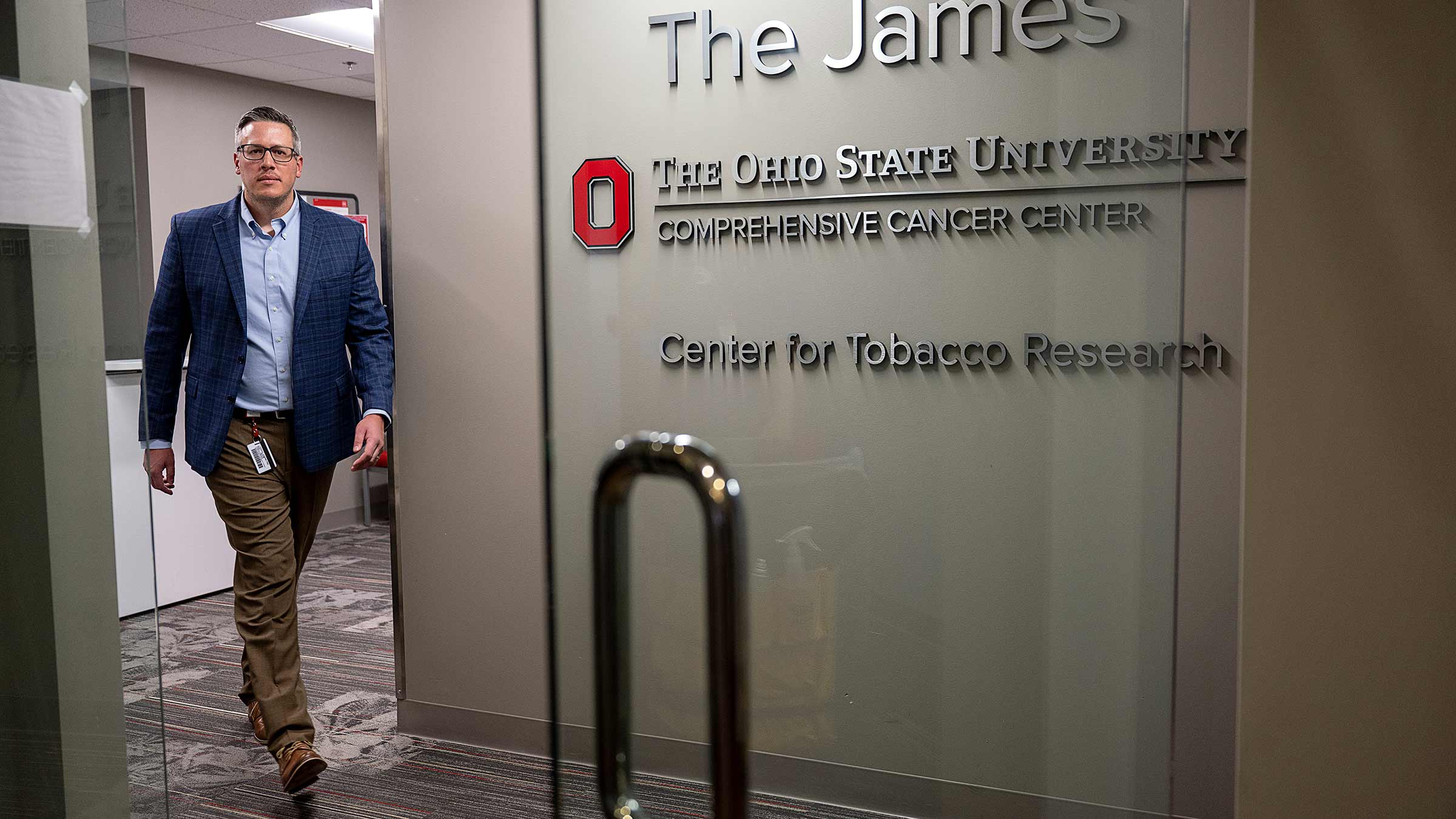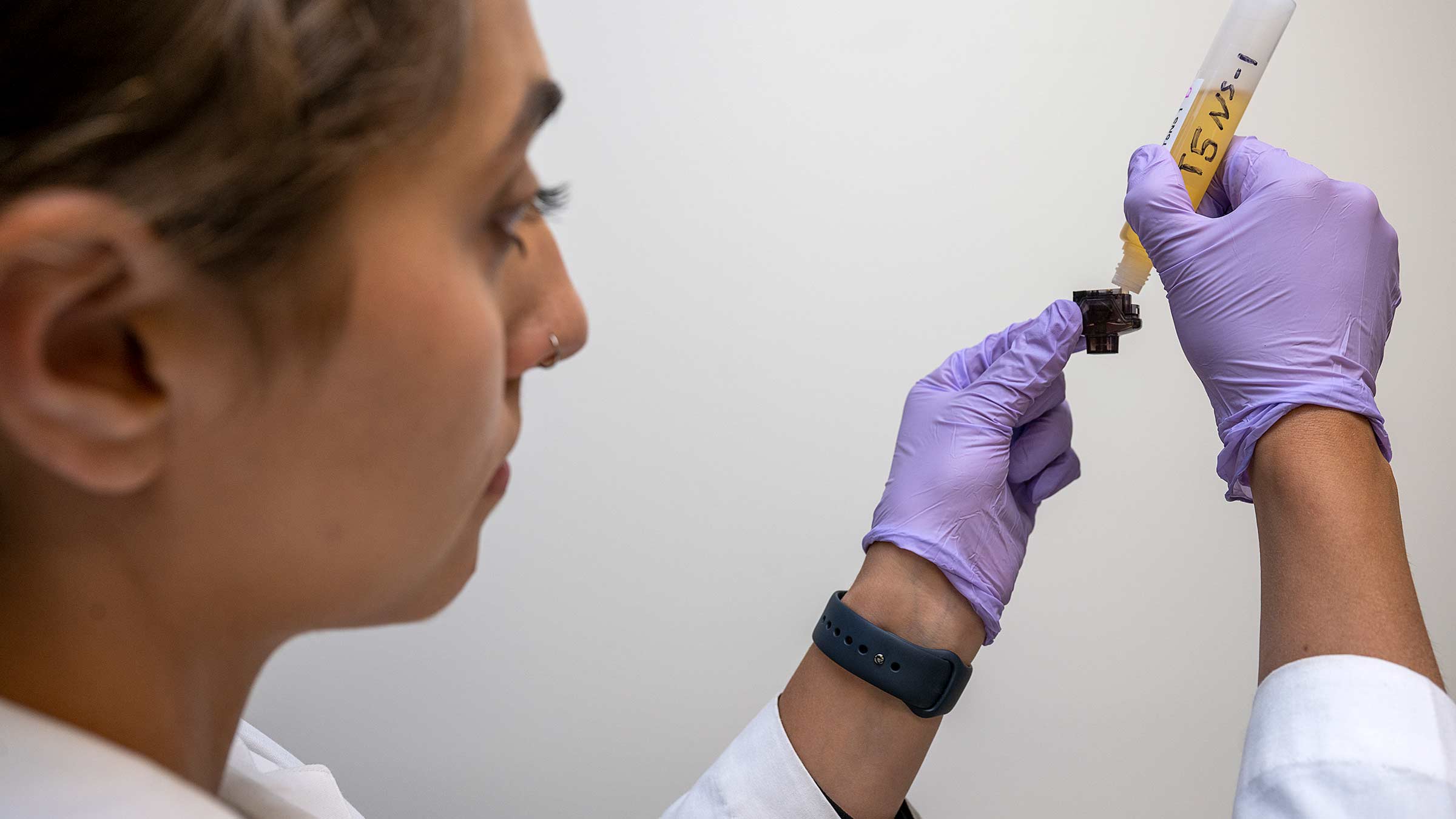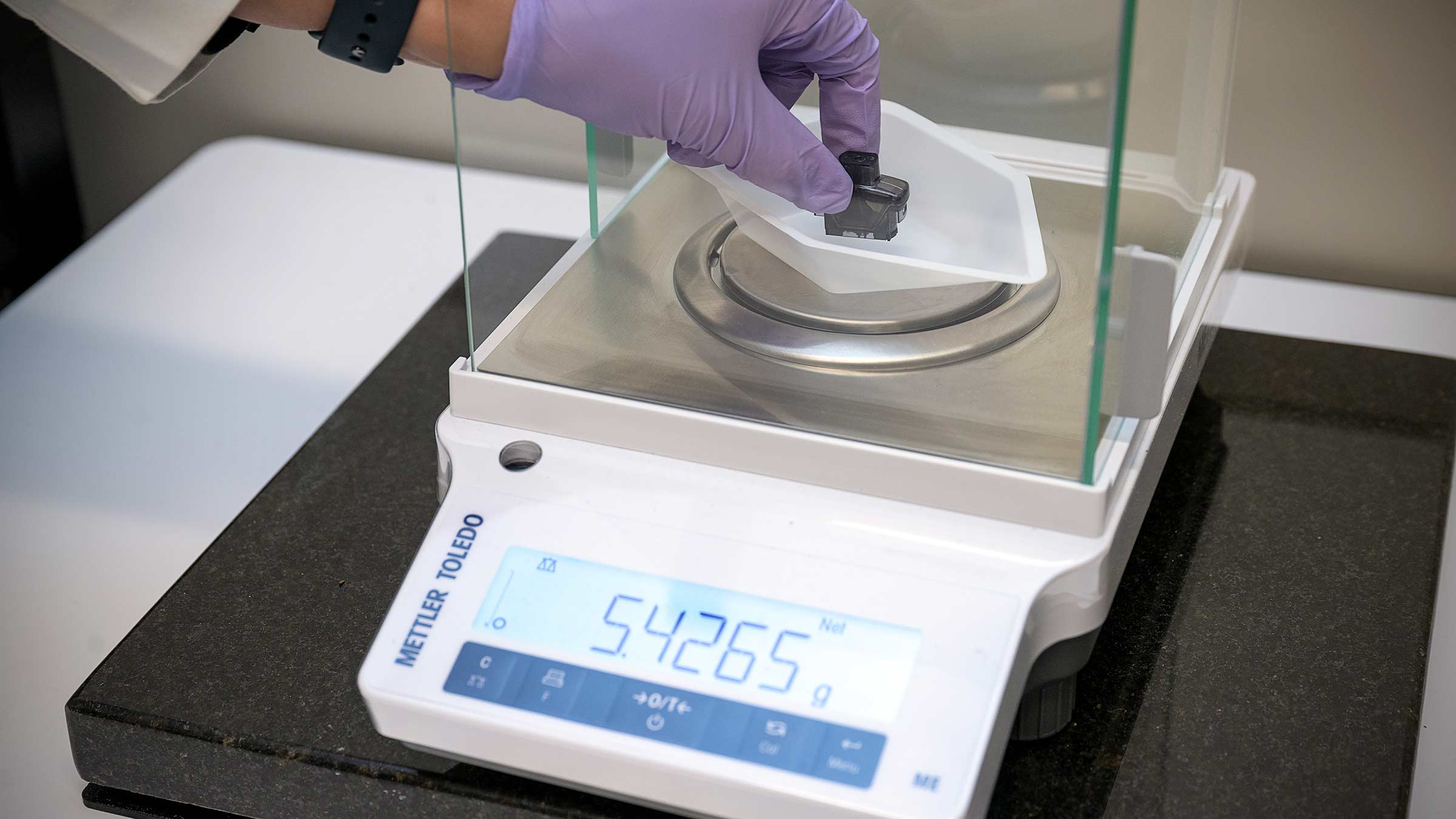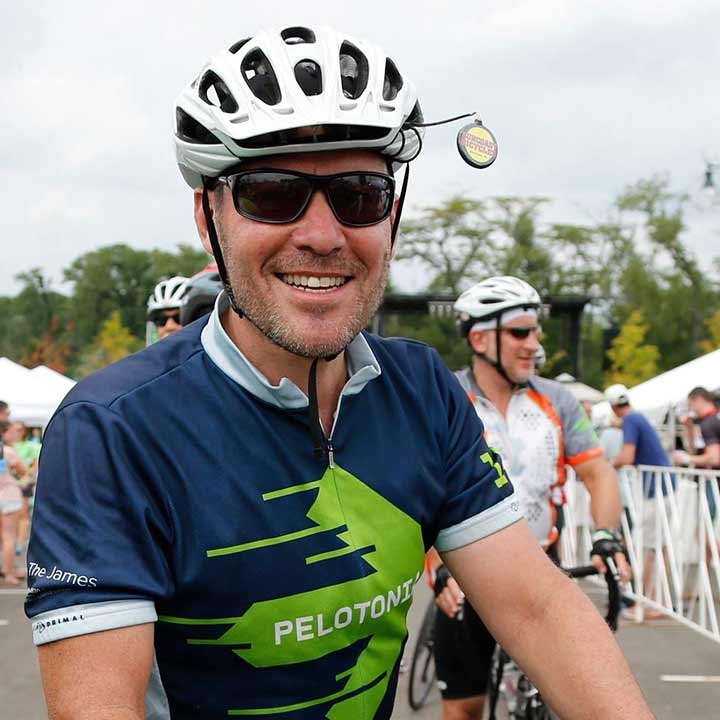Stopping the deadly legacy of tobacco use and nicotine addiction
Armed with a team of experts and decades of research, Ohio State’s Center for Tobacco Research is poised to make significant impacts on public health.
October 24, 2004. It’s an important date for Theodore Wagener, PhD — one that changed his life and provided him with insight that has helped him become one of the country’s leading tobacco researchers.
“That’s the day I quit smoking,” says Dr. Wagener, founding director of The Center for Tobacco Research (CTR) at The Ohio State University Comprehensive Cancer Center – Arthur G. James Cancer Hospital and Richard J. Solove Research Institute (OSUCCC – James) and co-leader of the Cancer Control Program. “I had been smoking a pack and a half a day for seven years and quit cold turkey.”
“So, I have firsthand knowledge of how much people enjoy smoking and how hard it is to quit,” Dr. Wagener says.

At the time, Wagener was in graduate school at Oklahoma State University, working toward a PhD in clinical psychology. “I wanted to see patients and really enjoyed teaching,” Dr. Wagener says, adding that being a research scientist wasn’t high on his list of career options. But a residency at Brown University and a mentor who researched tobacco eventually led him in a new direction.
Today, Dr. Wagener is a leader in evaluating the behavioral, pharmacological and toxicological effects of cigarettes and non-cigarette tobacco products, such as electronic cigarettes. He’s also a pioneer in developing smoking cessation and smoking reduction interventions for parents who smoke and expose their children to harmful secondhand smoke. Fueled by a new $20 million grant from the National Cancer Institute’s Tobacco Center of Regulatory Science (TCORS), Dr. Wagener and his team are poised to continue making lifesaving gains against the deadly impacts of tobacco.
A ‘shot of adrenaline’ in tobacco research
Dr. Wagener was recruited in 2019 to lead the CTR by Peter Shields, MD, an emeritus professor, medical oncologist and researcher within Ohio State’s cancer program. The goal, Dr. Shields says, was for Dr. Wagener to build the top tobacco research center in the nation.
“He’s outperformed beyond our wildest expectations,” Dr. Shields says. “We already had a strong trajectory and Ted was like a shot of adrenaline."
“He not only has his own strong research program, but he has recruited other top faculty who are outperforming. He has a keen eye for talent and, importantly, Ted’s a really nice guy.”

Learning to love a controversial subject: tobacco harm reduction research
At the time he was completing his psychology residency with Belinda Borrelli, PhD, at Brown University, Dr. Wagener was a novice at research and had only been part of one publication. And yet, Dr. Borelli, who is now director of the center for Behavioral Science Research at Boston University, saw something in him. “He had a unique passion and enthusiasm and was a deep thinker,” she says. “Moreover, he was willing to take risks and explore areas of study that were of intense interest to him, but controversial at the time.”
This controversial area of research was tobacco harm reduction. Because secondhand smoke can cause long-term health risks in children, several studies to get parents to stop smoking had been undertaken with poor results.

“None of these studies showed reduced toxicant levels in children with any type of intervention [to stop the parents from smoking],” Dr. Wagener says. “Either the parents weren’t being truthful or others in the house were smoking.”
Dr. Wagener decided to go in a different direction. “I wanted to make it easy for parents to stop smoking when they were around their children,” he says, adding that subjects in these studies were given nicotine lozenges and dissolvable tobacco products to use when around their children. The results were promising, and Dr. Wagener’s research led to a $250,000 grant from the National Cancer Institute in 2013 to continue his work.
With the grant in hand, Dr. Wagener left Brown for the University of Oklahoma Health Sciences Center, where he started his own lab. He quickly became a leader in harm-reduction tobacco research.
“Getting that grant and seeing the research do well, that’s what fueled me, and I never looked back,” Dr. Wagener says.
Expanding tobacco research to address e-cigarettes
Dr. Wagener began to study how early-generation e-cigarettes affected user behavior and whether it would help smokers stop smoking, as the manufacturers of these new products claimed in their marketing campaigns. And, just as importantly, he wanted to understand the impact of marketing e-cigarettes to teenagers.
“The tobacco industry has a history of using what they called ‘a graduation program.’ They start kids off on milder-tasting, starter products that don’t overwhelm them with nicotine, and then, once they become addicted, provide them with more robust products that often deliver more nicotine to maintain dependence,” Dr. Wagener explains.

Dr. Wagener’s research found that e-cigarettes can be more effective in terms of smoking cessation than nicotine replacement patches, gum and lozenges, “but we’re trying to figure out the potential health risks and we don’t know if they will also meaningfully increase a user’s risk of cancer, lung and heart diseases,” he says.
Building on the work of scientists nationwide, Dr. Wagener’s research has found that e-cigarettes, particularly those that used milder forms of nicotine, have led to millions of teenagers becoming addicted. Dr. Wagener says that recent regulations, such as raising the minimum legal age to purchase tobacco products to 21 are “somewhat helpful,” but believes additional product-level regulations, especially nicotine regulations, could significantly curb youth use.
Changing course and coming to Ohio State
Born and raised in Toledo, the idea of returning to Ohio was always a possibility. And so, when Dr. Shields pitched the idea of starting and leading the Center for Tobacco Research at Ohio State, Dr. Wagener was intrigued.
Dr. Shields and Ohio State had something else unique to offer: space for a new, state-of-the-art facility; a large team of top researchers already in place; and the resources necessary to recruit and support other top researchers from around the nation.
“He said we could do something really big here … and I said yes,” Dr. Wagener says.
Dr. Wagener hit the ground running at the CTR. In 2020, the team was awarded a $5.5 million grant from the American Heart Association focused on research into the health impacts of youth vaping, in collaboration with several other colleges at Ohio State. Similarly, a $5 million grant from the U.S. Food and Drug Administration is funding the center’s work to develop a universal smoking machine adaptor so that regulators, manufacturers and researchers can reliably conduct emissions testing of new tobacco products like e-cigarettes.
Bringing in the best and brightest
Darren Mays, PhD, MPH, an assistant professor of Medical Oncology and an assistant dean at the Ohio State College of Medicine, was one of the researchers Dr. Wagener recruited. He studies how the marketing messages of tobacco companies impact usage and how public health officials can better design campaigns to prevent usage and promote cessation.
“Ted convinced me to visit, and it wasn’t a tough sell,” Dr. Mays says. “The potential for growth and with Ted’s leadership, the great people already here and the resources they had, it was clear all the pieces were in place.”

The findings will help the FDA develop regulations that will make these products less appealing to young people, including nonusers.
“We’re trying to find the ‘sweet spot’ to adjust product ingredients and marketing such that kids will be turned off by them, but adult smokers will still find them appealing and be willing to switch to them as a harm-reduction alternative to cigarettes or smokeless tobacco products,” Dr. Wagener says.
“We want to close or at least significantly narrow the on-ramp for kids to become addicted to tobacco, while at the same time keep the off-ramp for adults to stop using the most harmful tobacco products, like cigarettes, cigars and traditional smokeless tobacco, as wide as possible,” he says.
“Ultimately, this work will save lives. Tobacco use remains the leading cause of preventable death in the world. Our work will help ensure that fewer young people start and an increasing number of adults find it easier and more appealing to quit for good.”

Quit smoking or tobacco use for good
Ohio State’s smoking cessation program uses evidence-based practices and resources to help you quit.
Get started today




